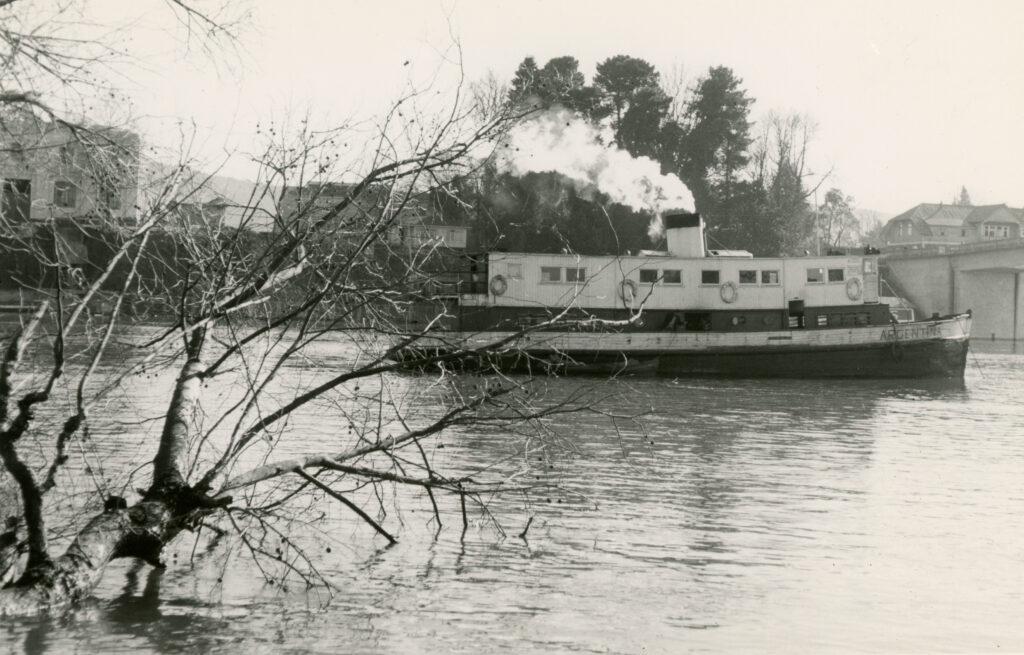Site-specific lunch
Menu: Potatoes, cabbage, and conversation with Adrián Silva ‘By the warmth of the fire.’
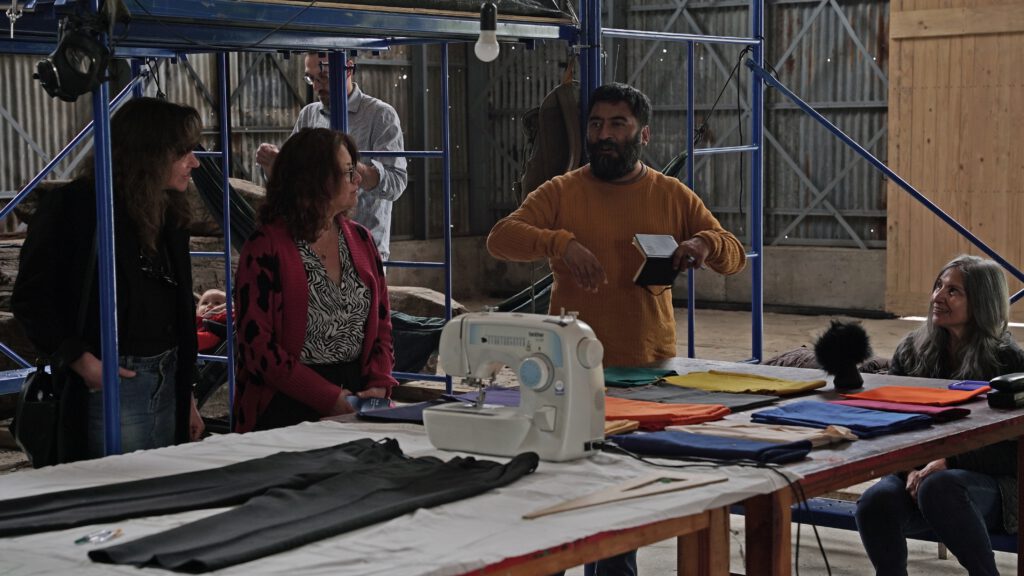
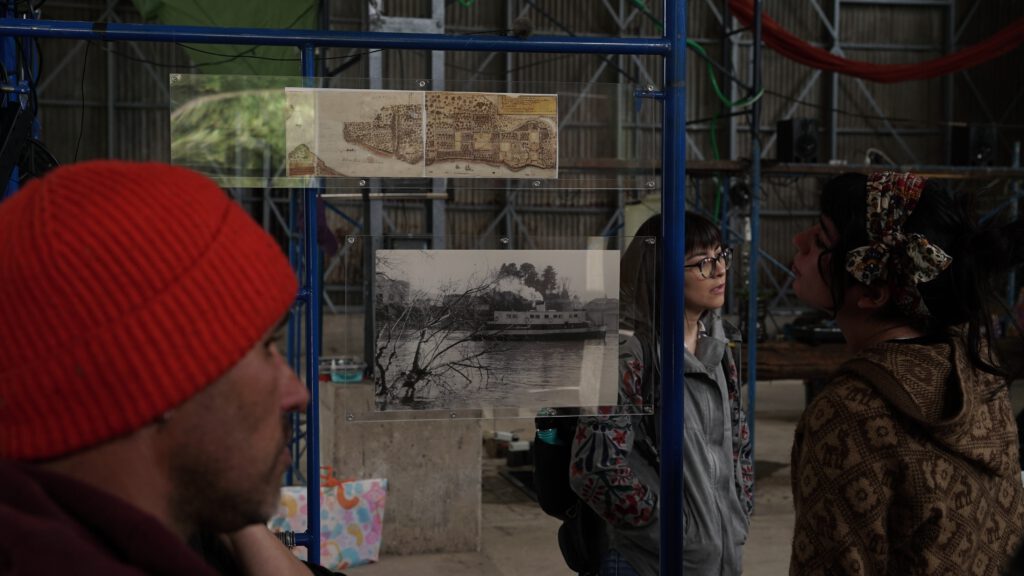
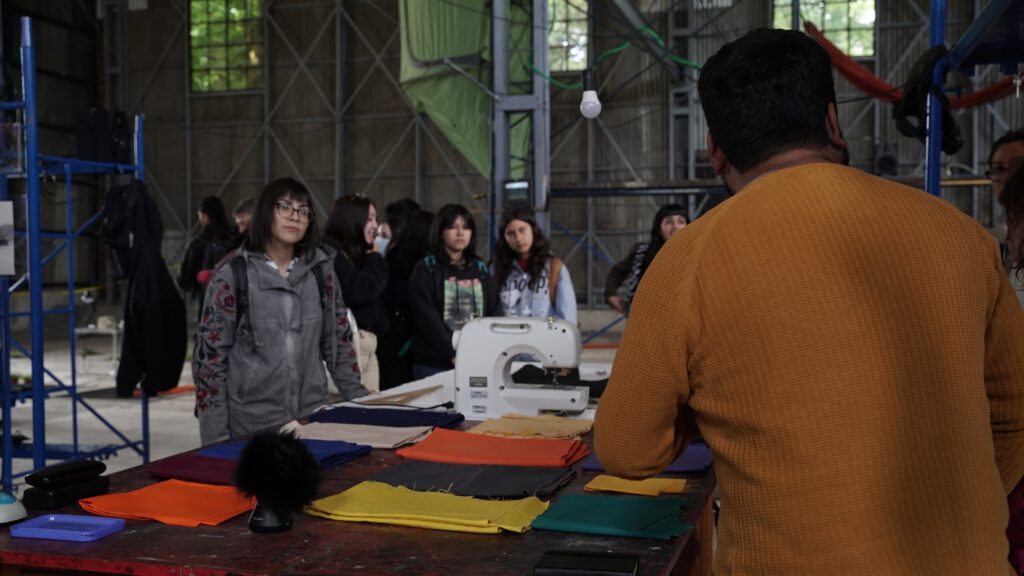
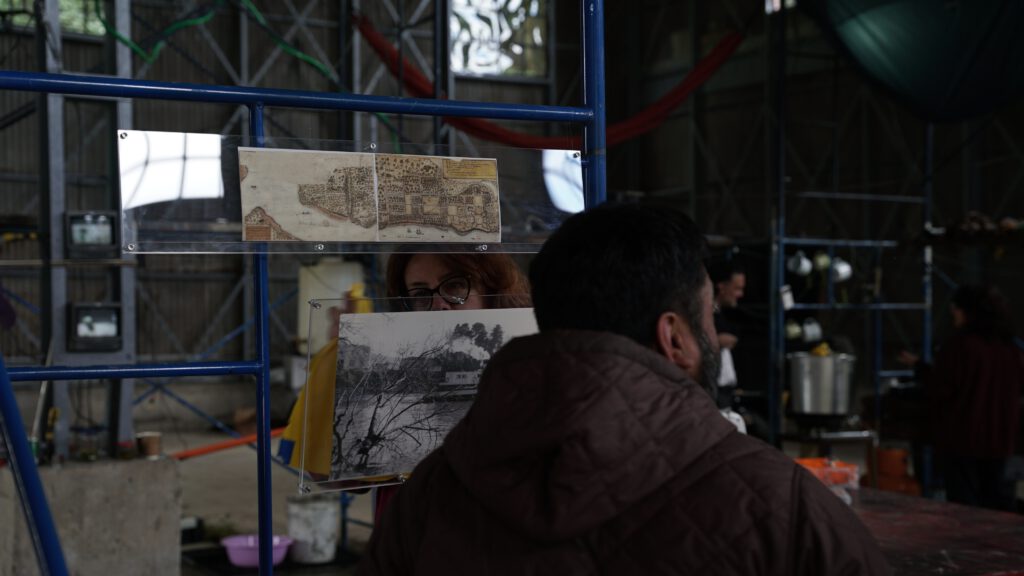
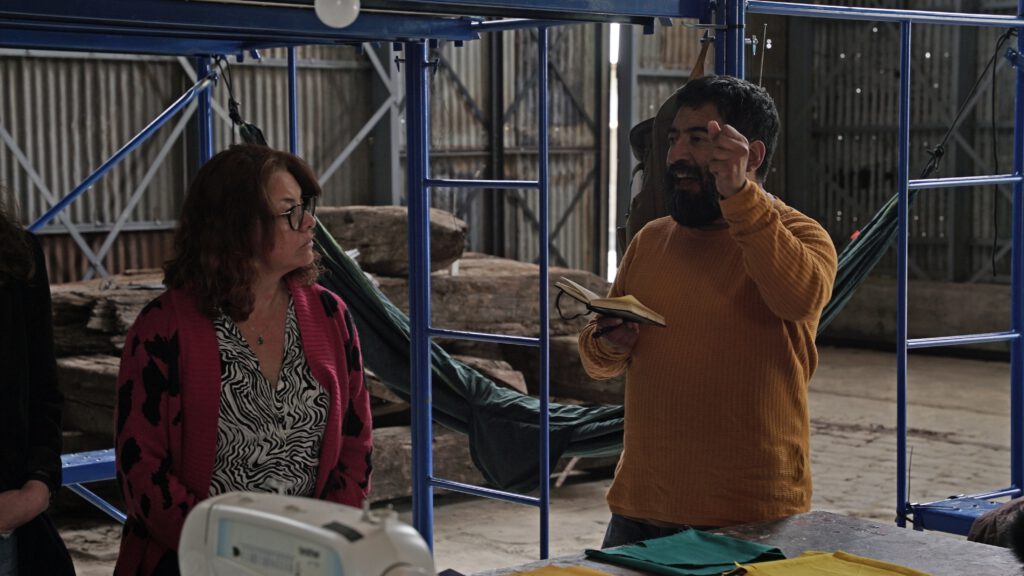
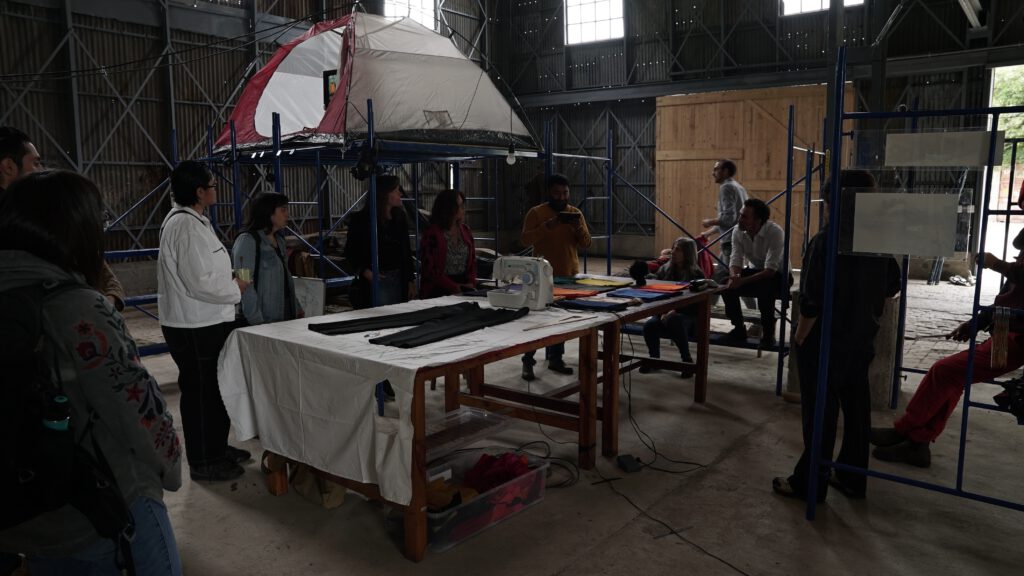
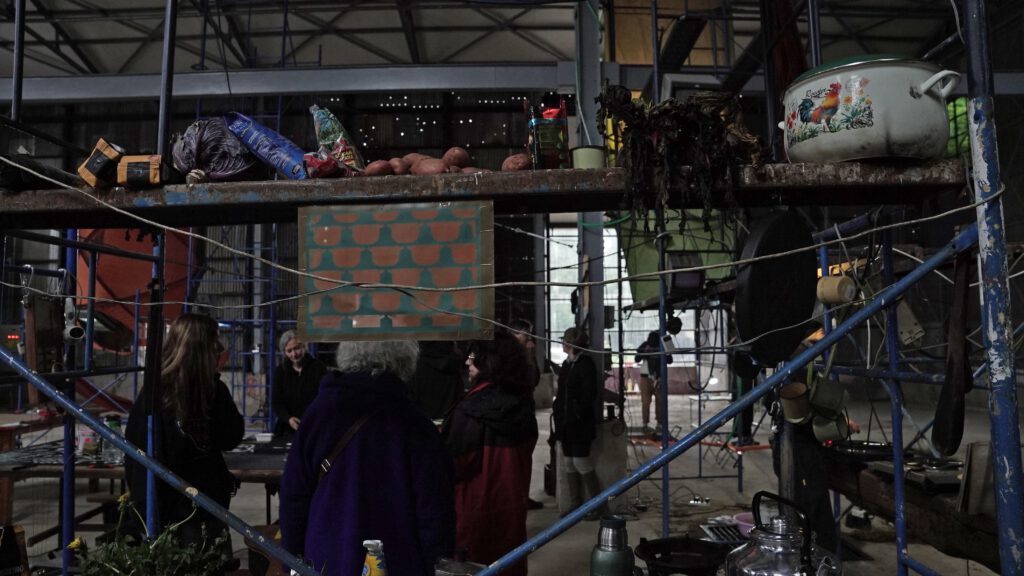
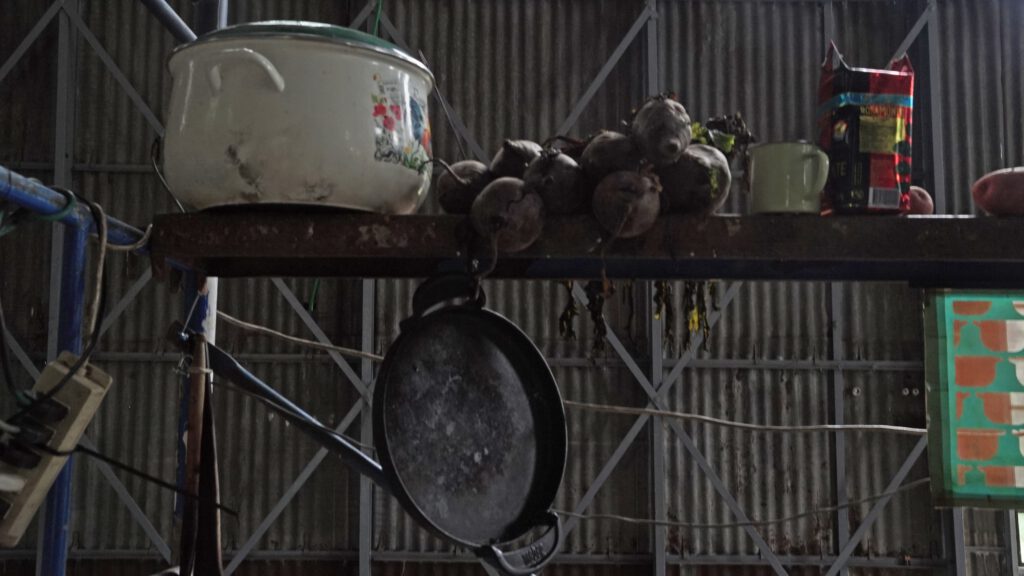

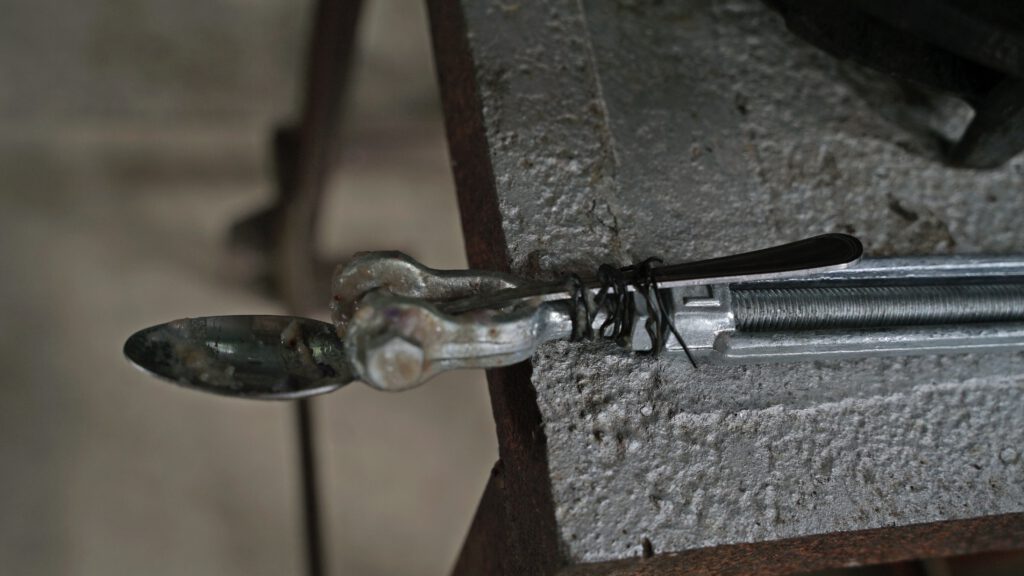
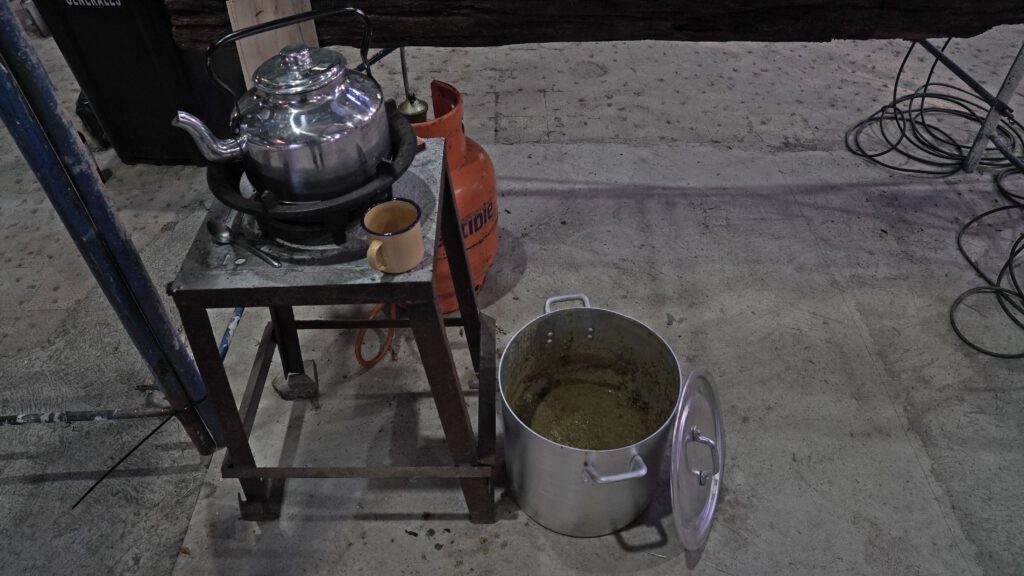
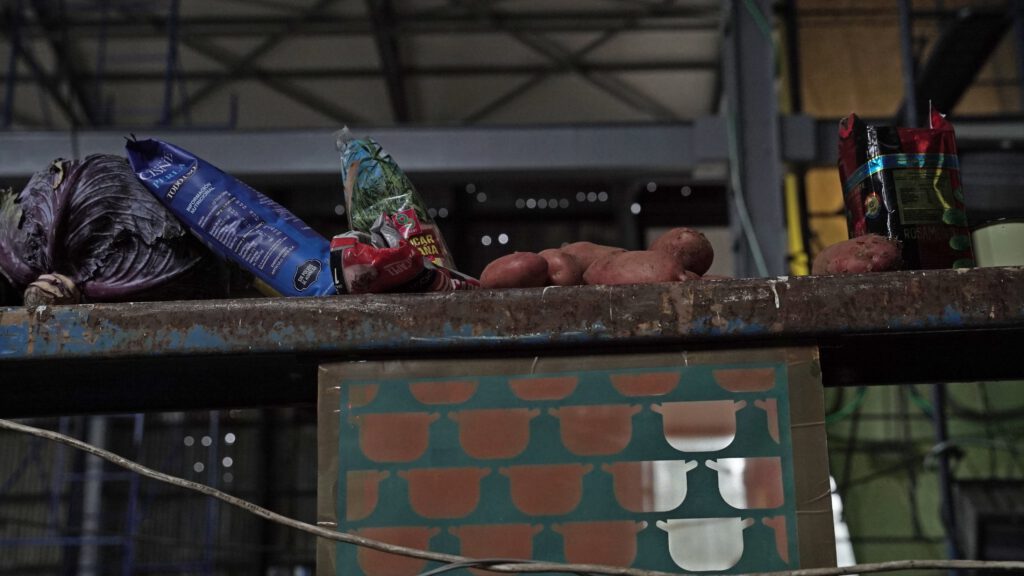
The firewood shed is a building that is part of the living remnants, providing insight into the habitation of Isla Teja, formerly known as Isla Valenzuela. This history is documented in chronicles, maps, and photographs and has been the subject of historical-archaeological research in the foundational area of Valdivia. The earliest archaeological dating, using thermoluminescence, places the island around the year 1250 AD. A Dutch occupation map from 1643 highlights a large Mapuche residential house, or ‘ruka,’ and only two images from the Photographic Heritage Collection of the Universidad Austral de Chile (Museum Directorate) reveal the firewood shed in the 1960s and 70s, though never as the main focus.
The structure and size of the firewood shed lead us to hypothesize that it was part of the industrial complex of the Anwandter Brewery, founded in 1851. By the late 19th century, a significant portion of its vast production, reaching 12 million liters annually at its peak, was exported to South American countries. Energy was essential for this production. However, the brewery’s glory days waned after the great fire of 1912 and the opening of the Panama Canal, coinciding with the onset of World War I in 1914. The firewood shed stands as the sole building whose structure and cladding have survived to this day. It has been restored and now plays a role in the creative industry.
Adrian Silva
